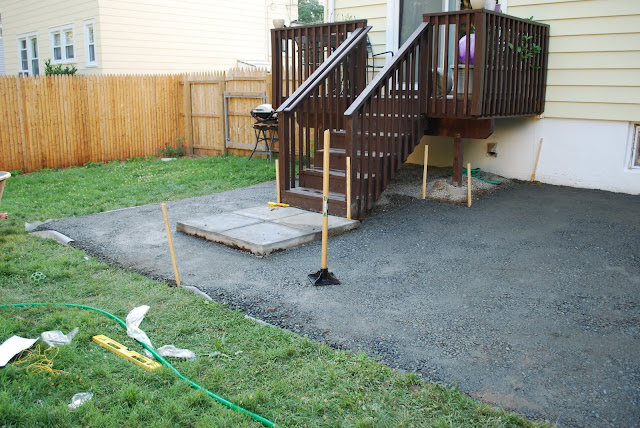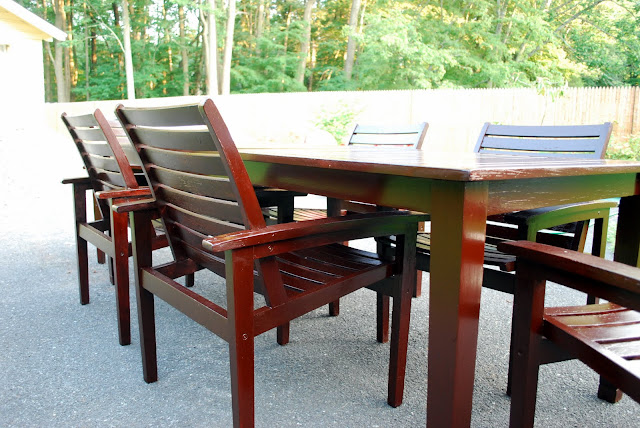While the patio was officially built, there were a few more things we had to do before we could officially call this project finished. And the biggest thing we had to do around the patio was landscaping. We needed to re-grade the lawn around the pavers so there would be a gentle slope away from the patio instead of a sharp drop. And we wanted to hide the ugly edging. When we dug out the patio base, we created a large dirt pile on the driveway. The dirt pile was moved back around the patio to create a gentle slope.
Originally we tried so save some of the sod from the lawn we dug away. We placed it in the back under trees in the shade - a strategy that worked well when we worked on the garden to keep it alive. Unfortunately the heat wave (with highs in the mid-100s) cooked all of the sod pieces and none of them survived. So instead we have to re-seed this part of the lawn when the horrible heatwave is over.
 |
| This awkward space will be landscaped with mulch and small shrubbery. |
We plan on filling the empty space between the patio and the driveway with some mulch and a few small shrubs like miniature boxwoods to visually separate the patio from the driveway and the driveway gate. It will help give this odd section a more finished look. We didn’t want the patio to follow the edge of the driveway so that we could continue to open the driveway gate (the patio is much higher than the driveway there) and so that we didn’t risk damaging the driveway base when digging everything out.





















































